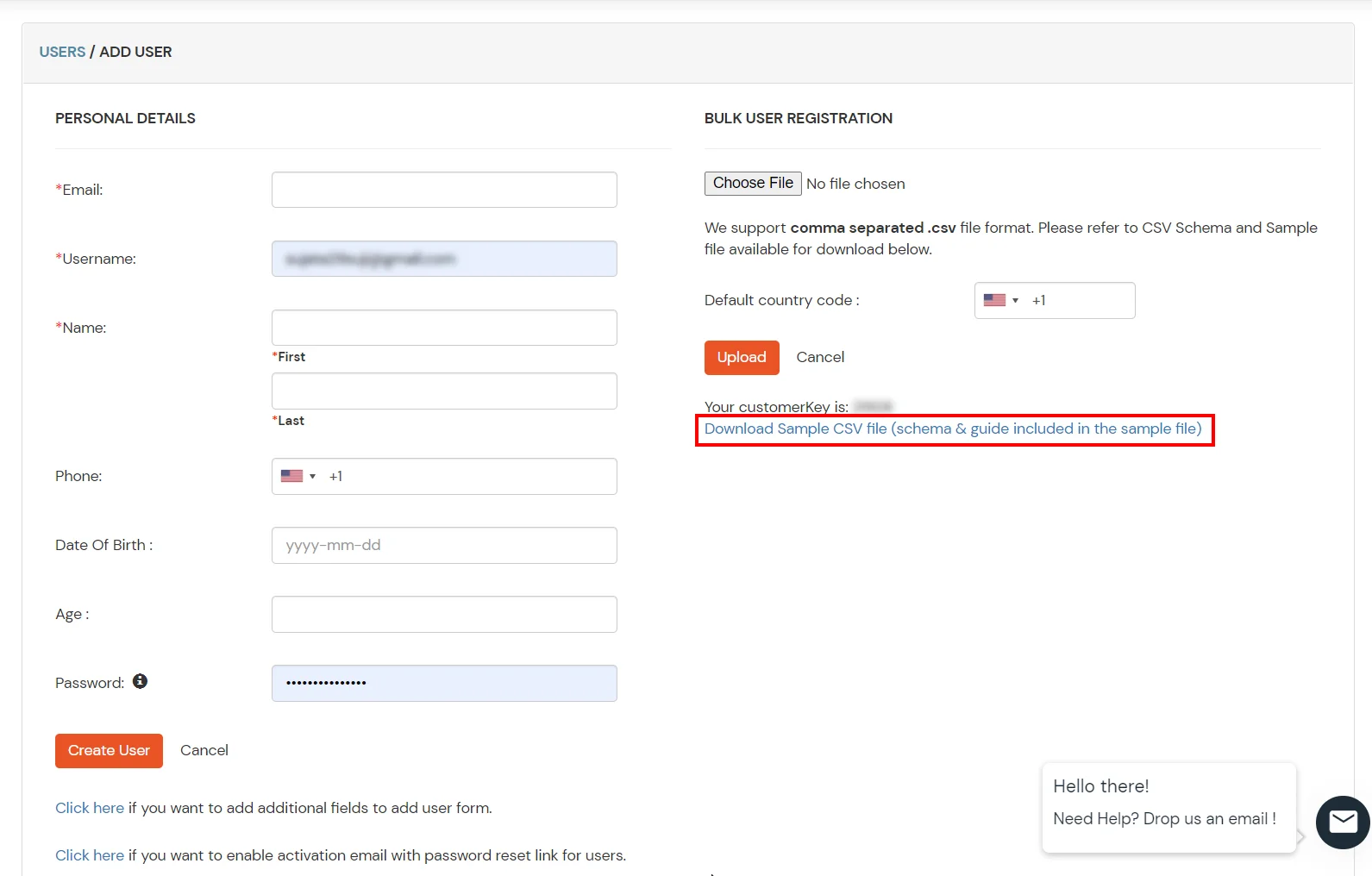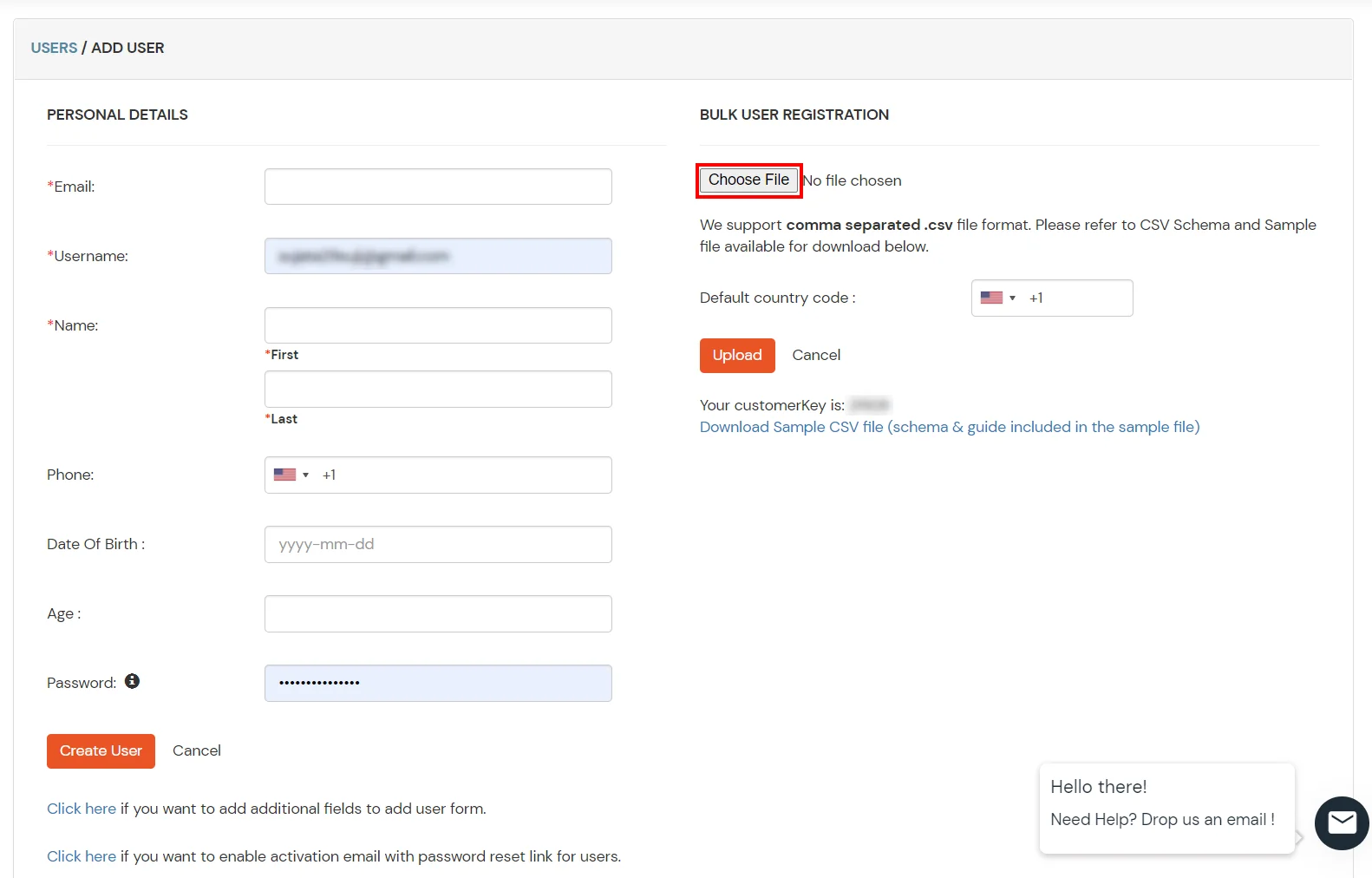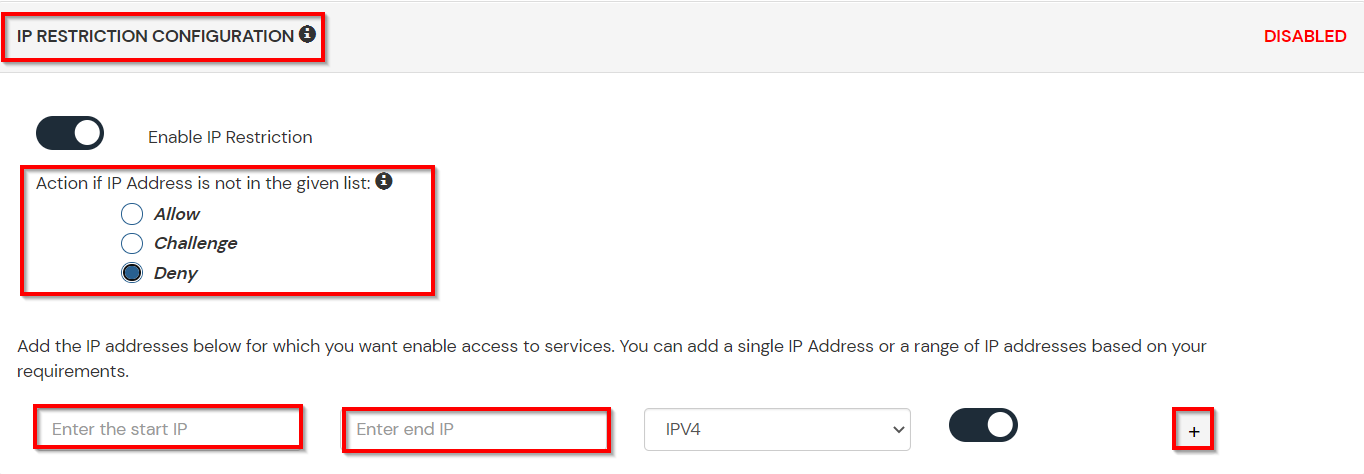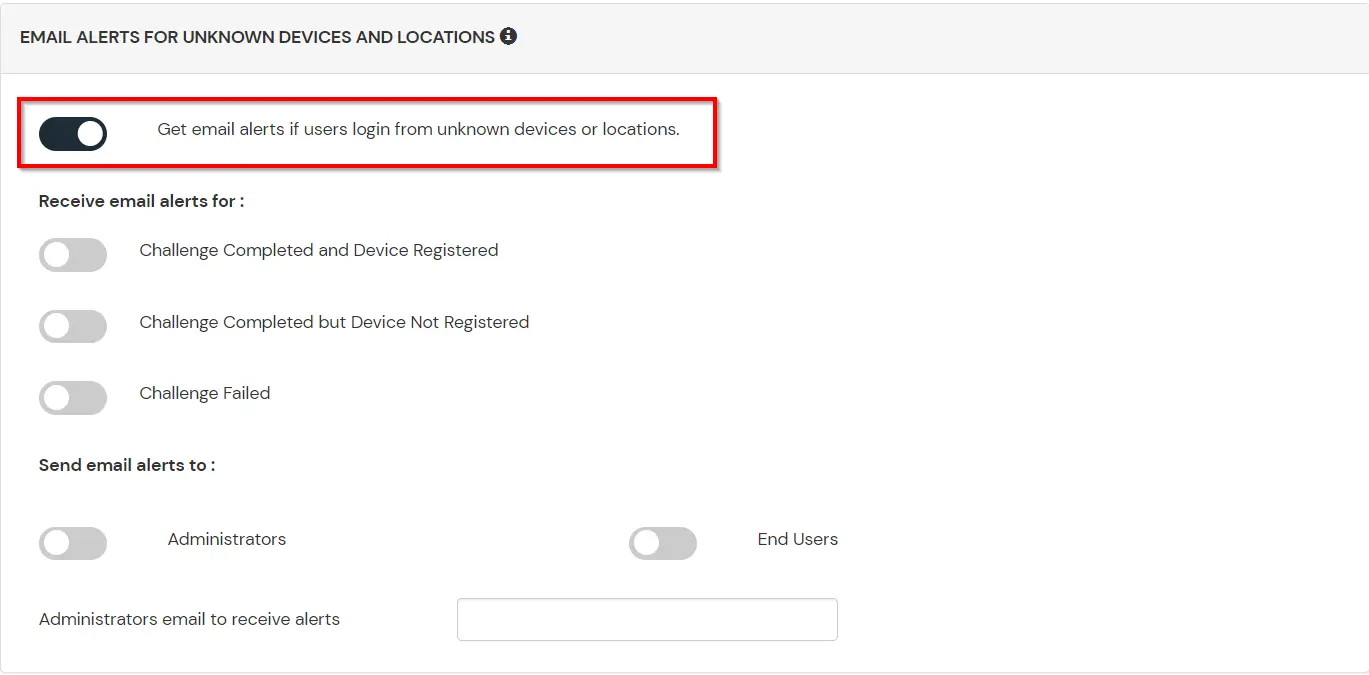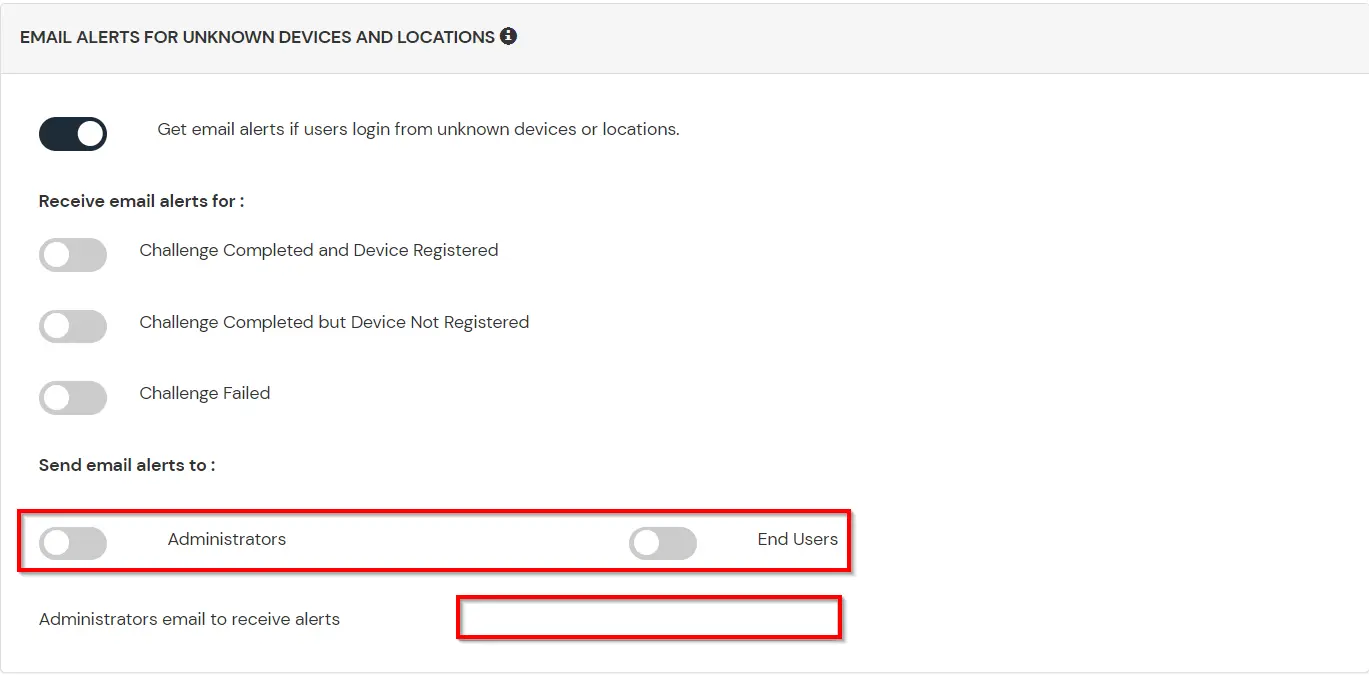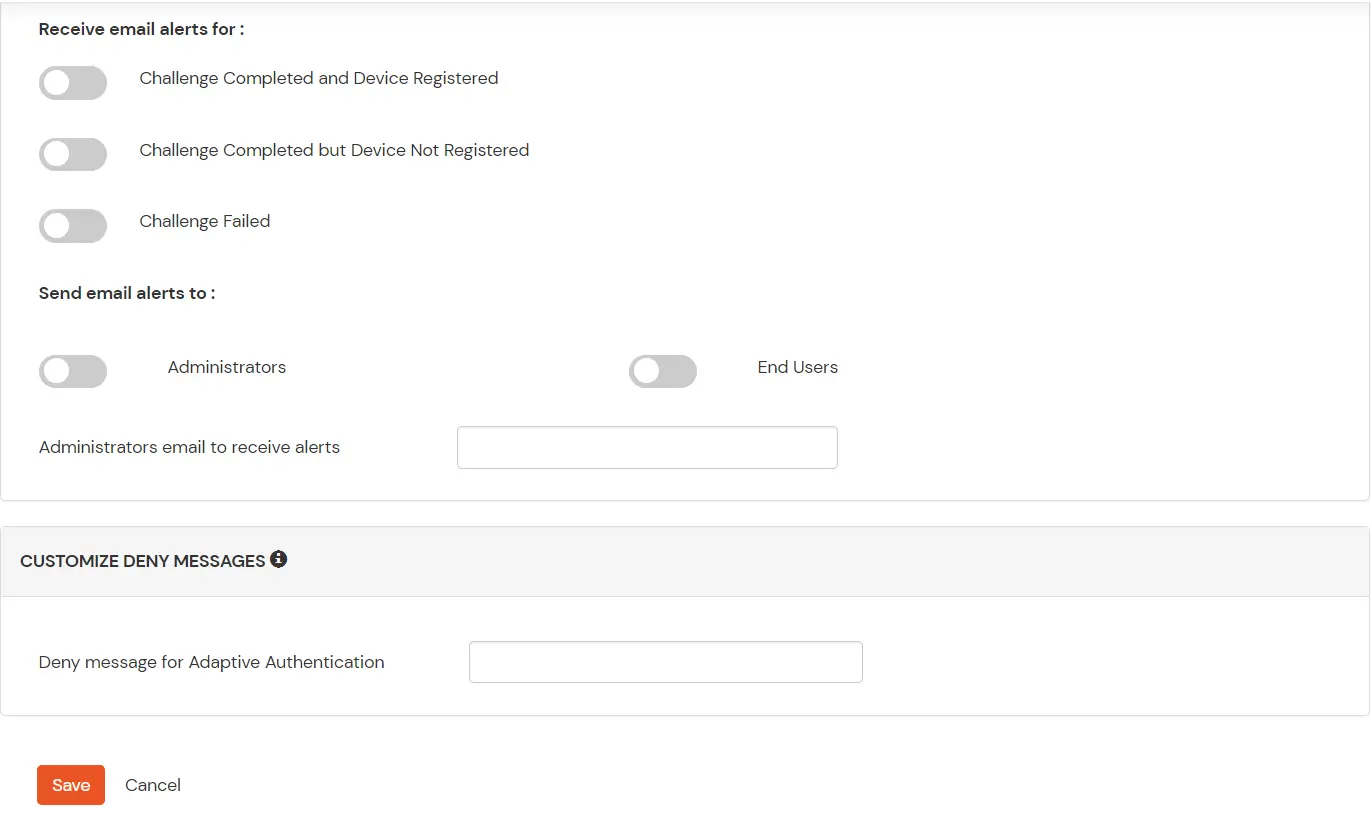Configure Citrix NetScaler Gateway Single Sign-On SSO | NetScaler SSO
miniOrange's Single Sign-On (SSO) solution ensures a secure entry into Citrix Netscaler using a unified set of login credentials. You can login using miniOrange, Azure AD, or your current identity provider credentials.
With miniOrange's SSO services, not only can you access Citrix Netscaler, but also other On-Premise and Cloud Applications using your established Identity Providers/User Store (like Azure Active Directory, Okta, Ping) credentials. Follow the setup guide for seamless integration of Citrix Netscaler SSO into your account.

miniOrange and Citrix NetScaler Single Sign-On (SSO) integration supports the following features:
- SP Initiated Single Sign-On (SSO)
- IdP Initiated Single Sign-On (SSO)
Connect with External Source of Users
miniOrange provides user authentication from various external sources, which can be Directories (like ADFS, Microsoft Active Directory, OpenLDAP, AWS etc), Identity Providers (like Microsoft Entra ID, Okta, AWS), and many more. You can configure your existing directory/user store or add users in miniOrange.
Follow the Step-by-Step Guide given below for Citrix NetScaler Single Sign-On (SSO)
1. Configure Citrix NetScaler Gateway in miniOrange
- Login into miniOrange Admin Console.
- Go to Apps and click on Add Application button.

- In Choose Application, select SAML/WS-FED from the application type dropdown.
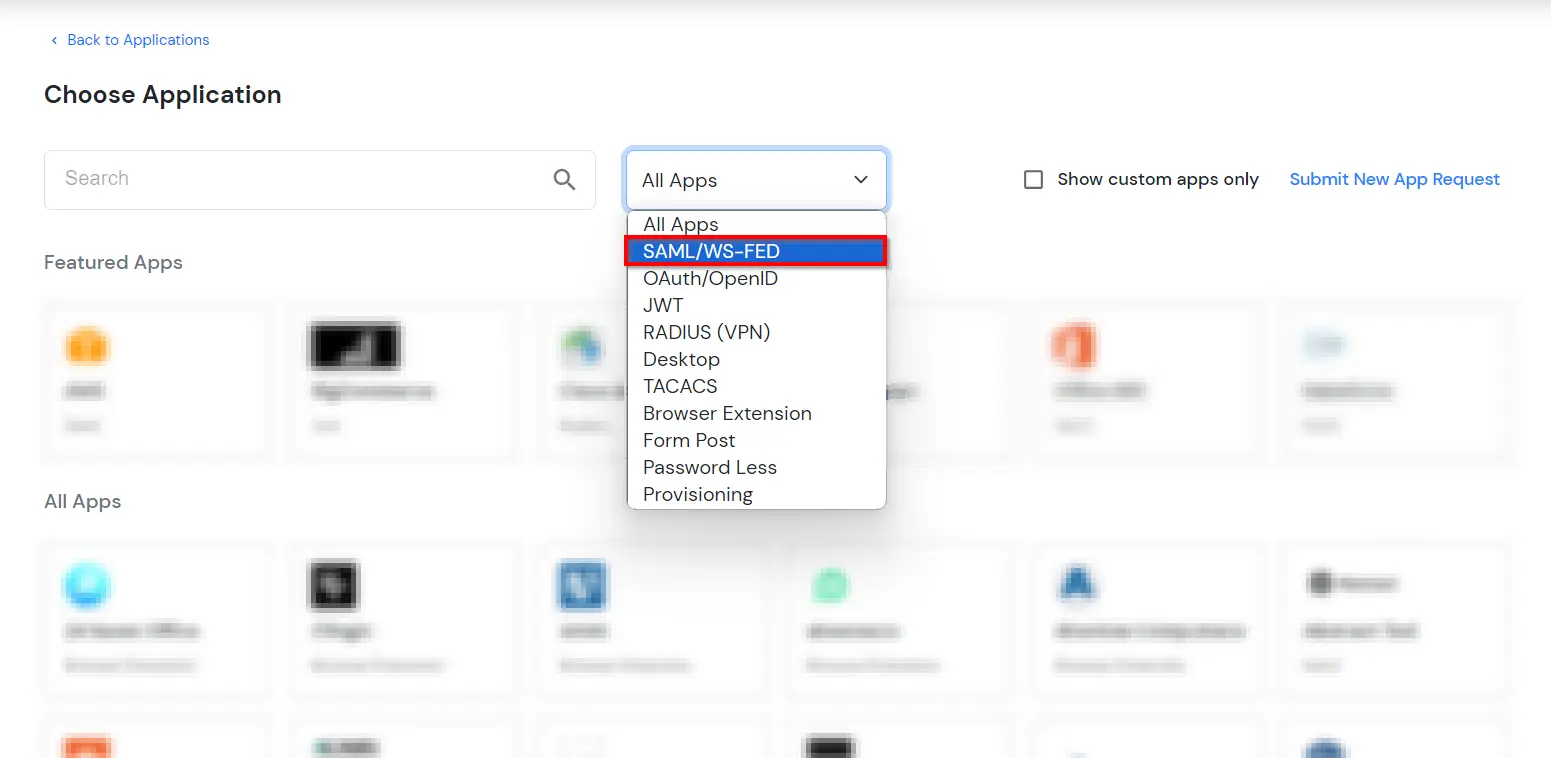
- Search for Citrix NetScaler Gateway in the list, if you don't find Citrix NetScaler Gateway in the list then, search for custom and you can set up your application in Custom SAML App.

- Enter the SP Entity ID as https://nssp2.example.com
- Enter the value of ACS URL as https://nssp2.example.com/cgi/samlauth
Here, enter your Share File account URL followed by /cgi/samlauth.
- Select the Email ID from the Name ID dropdown.

- Go to the Add Policy and select DEFAULT from the Group Name dropdown
- Now enter the Citrix NetScaler gateway in the "Policy Name field.
- Select PASSWORD from the First Factor Type dropdown.
- Click on Save to configure Citrix NetScaler gateway.

- Click on Metadata link to download the metadata which will be required later. Click on Link to see the IDP initiated SSO link for Citrix NetScaler Gateway.

- Here you will see 2 options, if you are setting up miniOrange as IDP copy the metadetails related to miniOrange, if you already have an external IdP(okta,AZURE AD, ADFS, ONELOGIN, GOOGLE APPS) you can get metadata from the 2nd Section as shown below.
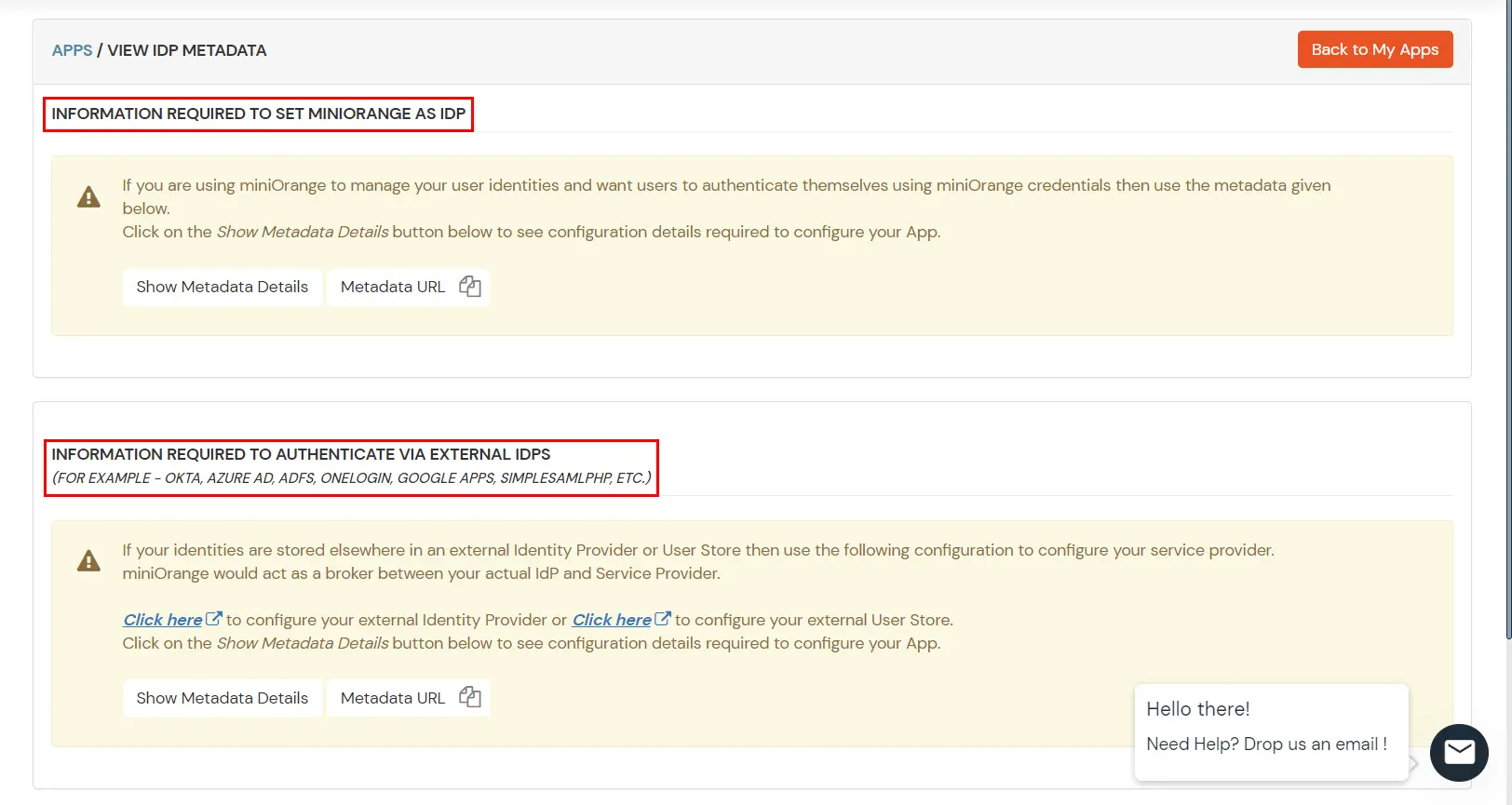
- Copy the SAML Login URL, SAML Logout URL, X.509 certificate, IdP Entity ID or Issuer which we will require later in step 2.
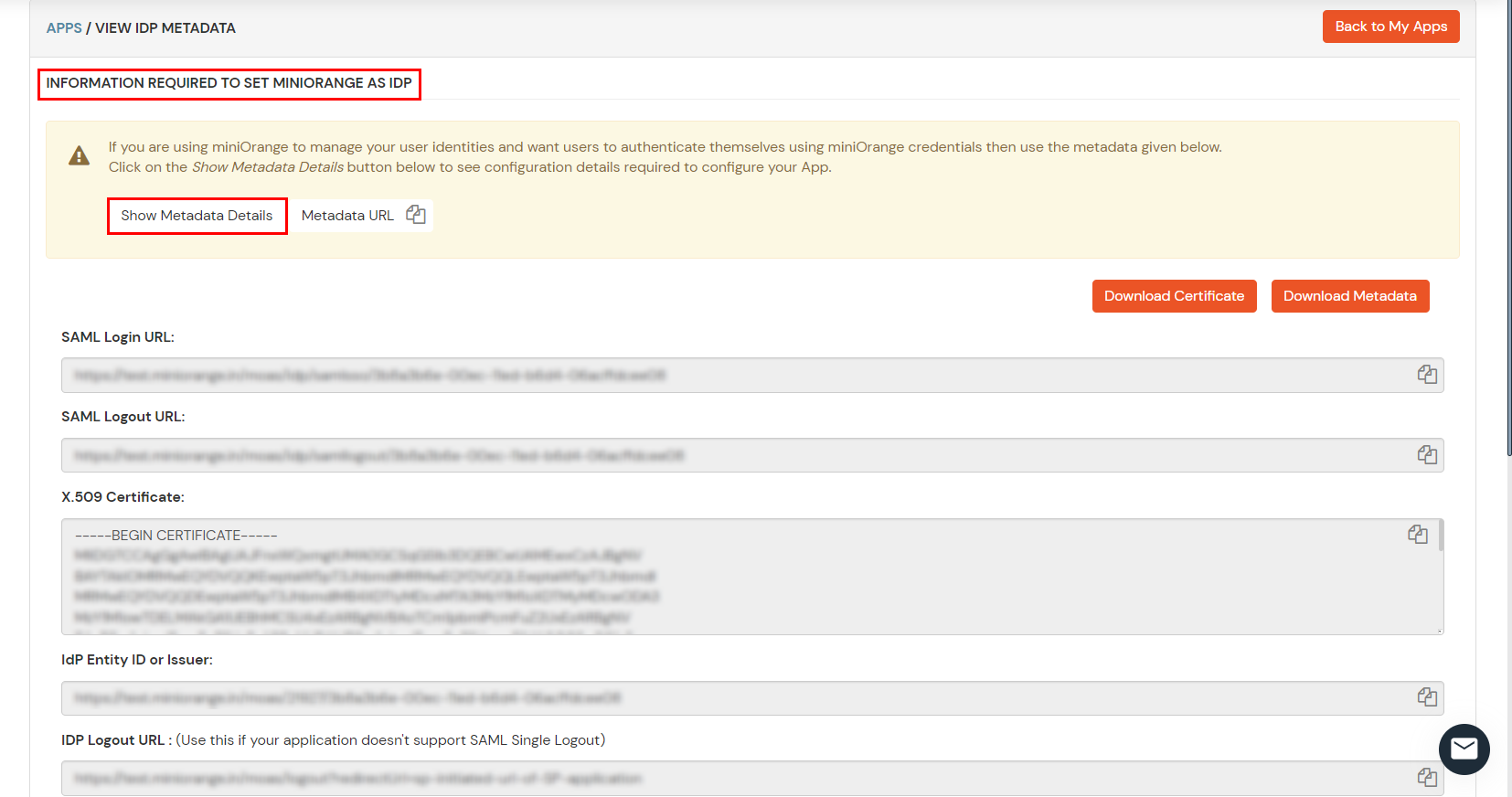
2. Configure SSO in Citrix NetScaler
- Login the Citrix NetScaler admin interface with admin rights.
- Click on Configuration tab, select Traffic Management >> SSL >> Certificates.
Note: In case if you are using NetScaler 11.1, then select Traffic Management >> SSL >> CACertificates >> Install.
- Install Certificate window will pop up. Enter the following entities in it:
| Certificate-Key Pair Name* |
Identity Name |
| Certificate File Name* |
Click on down arrow button next to Browse and select local.
Select the x.509 certificate which is downloaded in step 1. |

- Click Install.
- Under the Configuration page, select NetScaler Gateway >> Policies >> Authentication >> SAML.
- Under the Servers tab click Add.

- In the Create Authentication SAML Server form, enter the following entities:
| Name |
Enter a name for your Server |
| IDP certificate Name |
Select certificate you imported earlier |
| Redirect URL* |
Enter the SAML Login URL which you copied from the metadata section |
| Single Logout URL |
Enter the SAML Logout URL which you copied from the metadata section |
| User Field |
It should be Name ID untill another identifier is being used |
| Signing Certificate Name |
Certificate for your Gateway VIP |
| Issuer Name |
Enter the IdP Entity ID or Issuer value which you copied from the metadata section |

- Scroll down and search for Signature Algorithm section.
- Make sure the settings are as shown as below.
- Signature Algorithm -> RSA-SHA256
- Digest Method -> SHA256
- SAML Binding -> POST

- Click on OK to save the settings.
- Go back in the SAML section, select the Policies then click on Add.

- Under Create Authentication SAML Policy, enter the following entities:
| Name* |
Enter a required name |
| Server* |
Click on down arrow button for drop-down menu and select your created server entry |
| Expression* |
ns_true |
- Click Create to save the policy.

- On the left side below NetScaler Gateway section, select Virtual Servers.
- Locate the virtual server to bind with miniOrange SAML and click Edit.
- Under Authentication section, unbind all the existing polocies.
- Close the suthentication sub-window.
- Go back in Virtual Server configuration screen, find the Basic Authentication section and select plus (+) icon.

- Under the Choose Policy*, select SAML, under the Choose Type, select Primary.
- Click Continue.

- Under the Policy Binding section, click on SAML policy which you created earlier.
- Click on the radial button which is in left and click on OK.
- Set the Priority as 100 and click on Bind.

- Go back to Virtual Server configuration screen and click on Done.

3. Configure on StoreFront
- First click on Manage NetScaler Gateway >> Add to add a new Gateway.

- Refer below screenshot to Configure General Settings

- Add Secure Ticket Authority details:

- Add Authentication Settings >> OK.

- Now, click on Manage Authentication Methods and Pass-through option selected and click on the Settings button in the Pass-through option to enable Delegated Authentication as below:

- Click on Configure Remote Access Settings and add NetScaler Gateway appliance as done in above step.

- Note : It is important to enable Delegated Authentication as mentioned in above steps, else we will get an error saying “Cannot Complete your Request” on trying to do SSO to StoreFront after authentication at NetScaler is successful.
For the callback url configured at step “4” to work, we need to open port 443 from StoreFront to NetScaler.
The callback url is required for the SAML to work, the NetScaler Gateway Certificate must be trusted at StoreFront.
4. Test SSO Configuration
Test SSO login to your Citrix NetScaler Gateway account with miniOrange IdP:
5. Configure Your User Directory (Optional)
miniOrange provides user authentication from various external sources, which can be Directories (like ADFS, Microsoft Active Directory, Microsoft Entra ID, OpenLDAP, Google, AWS Cognito etc), Identity Providers (like Okta, Shibboleth, Ping, OneLogin, KeyCloak), Databases (like MySQL, Maria DB, PostgreSQL) and many more. You can configure your existing directory/user store or add users in miniOrange.
- Click on External Directories >> Add Directory in the left menu of the dashboard.

- Select Directory type as AD/LDAP.

- STORE LDAP CONFIGURATION IN MINIORANGE: Choose this option if you want to keep your configuration in miniOrange. If active directory is behind a firewall, you will need to open the firewall to allow incoming requests to your AD.
- STORE LDAP CONFIGURATION ON PREMISE: Choose this option if you want to keep your configuration in your premise and only allow access to AD inside premises. You will have to download and install miniOrange gateway in your premise.

- Enter LDAP Display Name and LDAP Identifier name.
- Select Directory Type as Active Directory.
- Enter the LDAP Server URL or IP Address against LDAP Server URL field.
- Click on Test Connection button to verify if you have made a successful connection with your LDAP server.

- In Active Directory, go to the properties of user containers/OU's and search for Distinguished Name attribute.
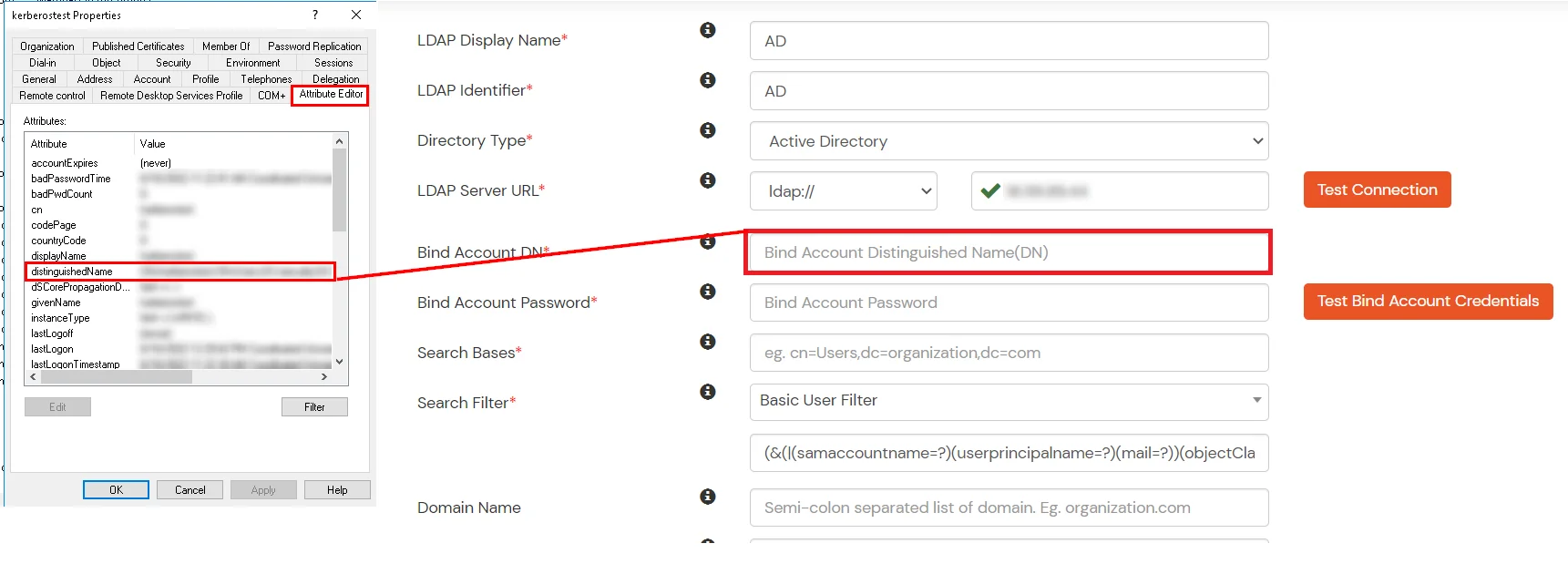
- Enter the valid Bind account Password.
- Click on Test Bind Account Credentials button to verify your LDAP Bind credentials for LDAP connection.

- Search Base is the location in the directory where the search for a user begins. You will get this from the same place you got your Distinguished name.

- Select a suitable Search filter from the drop-down menu. If you use User in Single Group Filter or User in Multiple Group Filter, replace the <group-dn> in the search filter with the distinguished name of the group in which your users are present. To use custom Search Filter select "Write your Custom Filter" option and customize it accordingly.

- You can also configure following options while setting up AD. Enable Activate LDAP in order to authenticate users from AD/LDAP. Click on the Save button to add user store.

Here's the list of the attributes and what it does when we enable it. You can enable/disable accordingly.
| Attribute |
Description |
| Activate LDAP |
All user authentications will be done with LDAP credentials if you Activate it |
| Sync users in miniOrange |
Users will be created in miniOrange after authentication with LDAP |
| Fallback Authentication |
If LDAP credentials fail then user will be authenticated through miniOrange |
| Allow users to change password |
This allows your users to change their password. It updates the new credentials in your LDAP server |
| Enable administrator login |
On enabling this, your miniOrange Administrator login authenticates using your LDAP server |
| Show IdP to users |
If you enable this option, this IdP will be visible to users |
| Send Configured Attributes |
If you enable this option, then only the attributes configured below will be sent in attributes at the time of login |
- Click on Save. After this, it will show you the list of User stores. Click on Test Connection to check whether you have enter valid details. For that, it will ask for username and password.

- On Successful connection with LDAP Server, a success message is shown.
- Click on Test Attribute Mapping.

- Enter a valid Username. Then, click on Test. Mapped Attributes corresponding to the user are fetched.

- After successful Attribute Mapping Configuration, go back to the ldap configuration and enable Activate LDAP in order to authenticate users from AD/LDAP.
Refer our guide to setup LDAPS on windows server.
User Import and Provisioning from AD
- Go to Settings >> Product Settings in the Customer Admin Account.
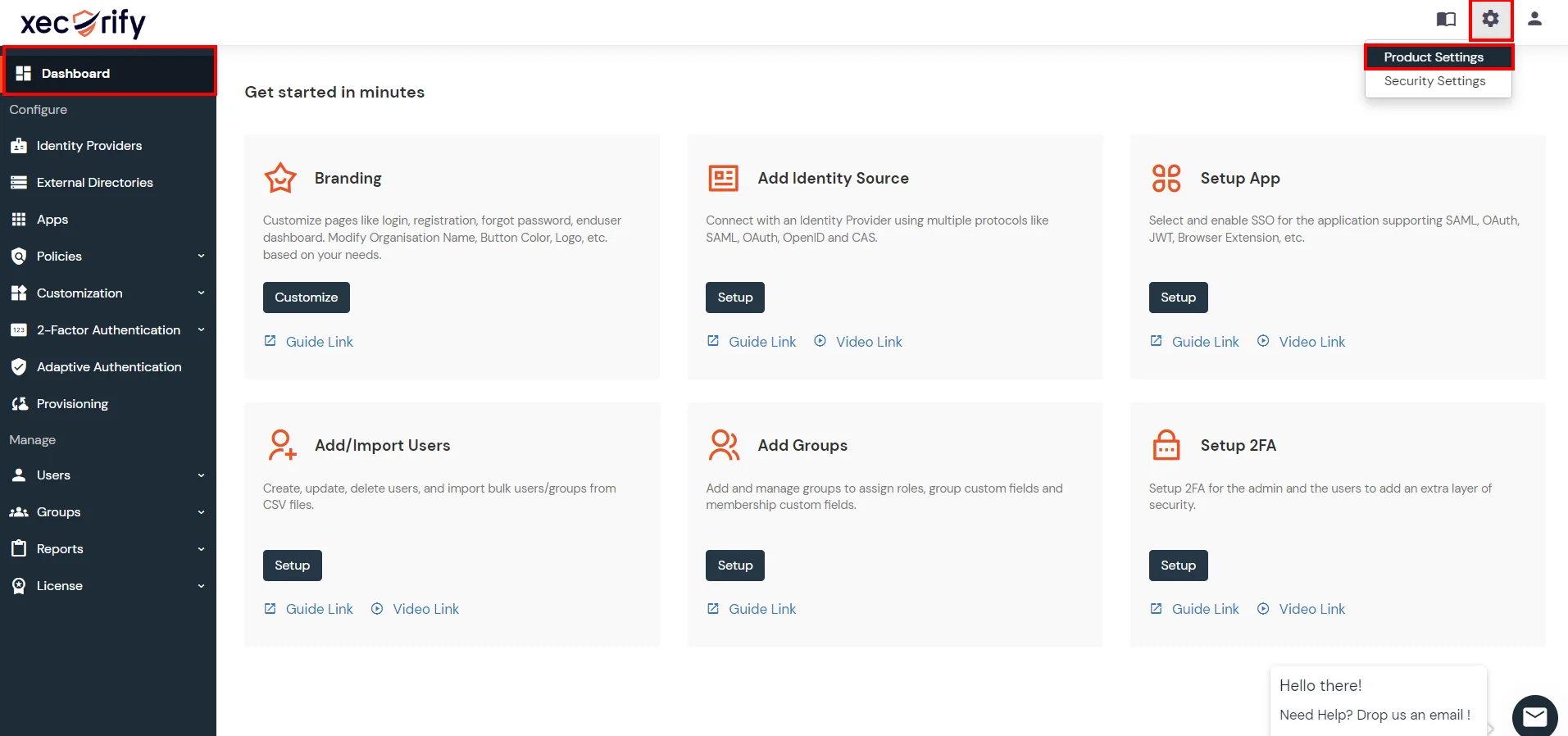
- Enable the "Enable User Auto Registration" option and click Save.

- (Optional) To send a welcome email to all the end users that will be imported, enable the "Enable sending Welcome Emails after user registration" option and click Save.

- From the Left-Side menu of the dashboard select Provisioning.
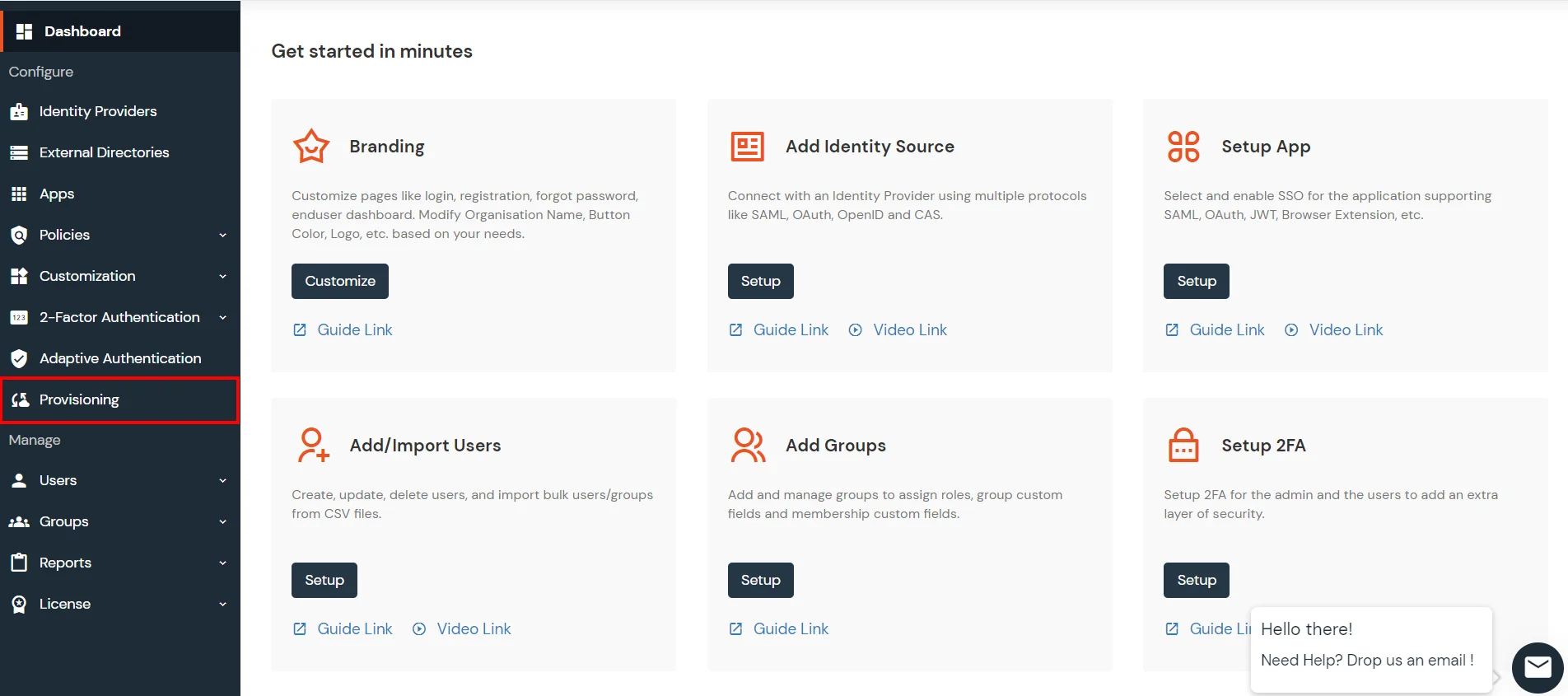
- In Setup Provisioning tab select Active Directory in the Select Application drop-down.
- Toggle the Import Users tab, click on Save button.
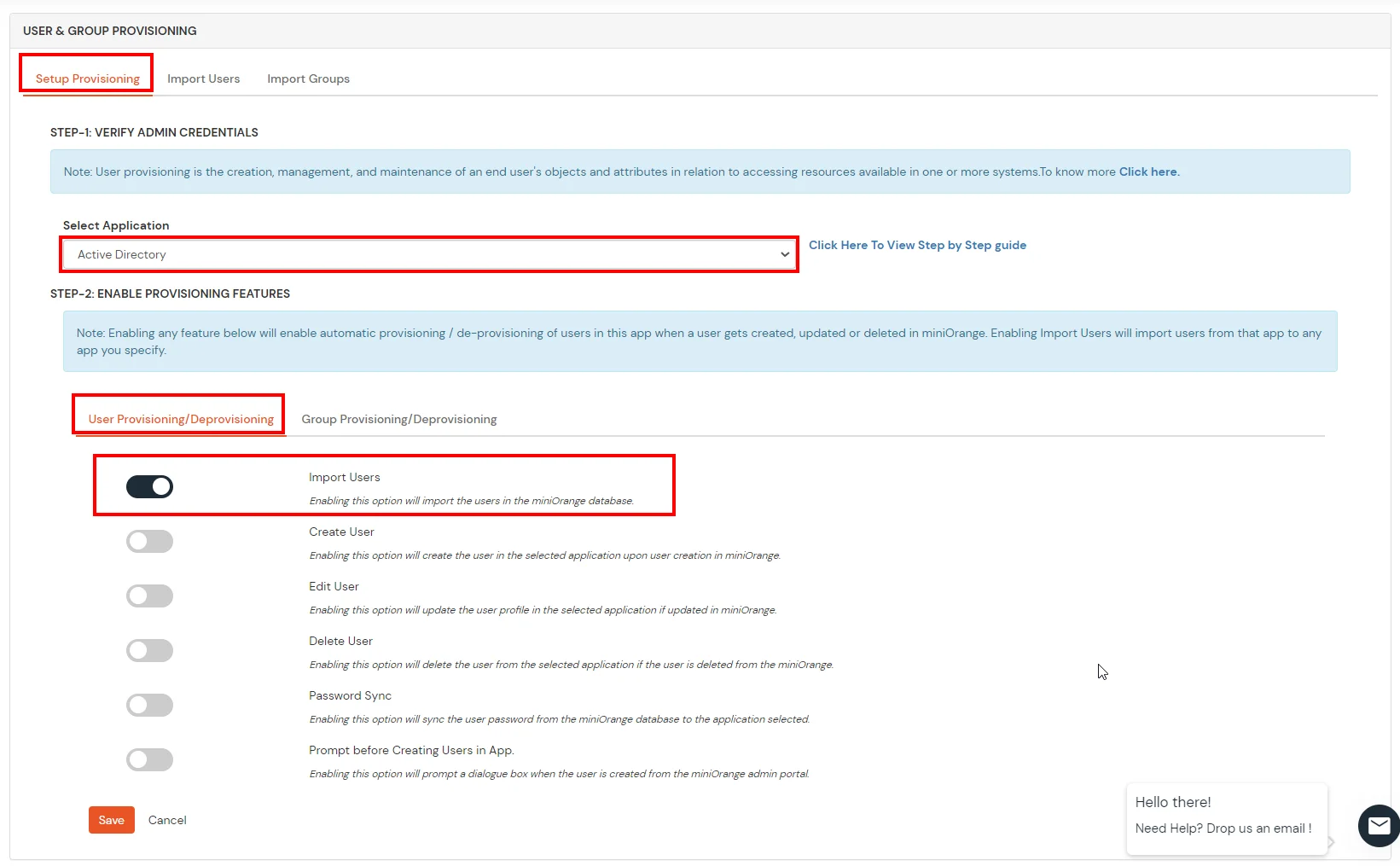
- On the same section, switch to Import Users section.
- Select Active Directory from the dropdown and click on the Import Users tab, to import all the users from Active Directory to miniOrange.

- You can view all the Users you have imports by selecting Users >> User List from Left Panel.
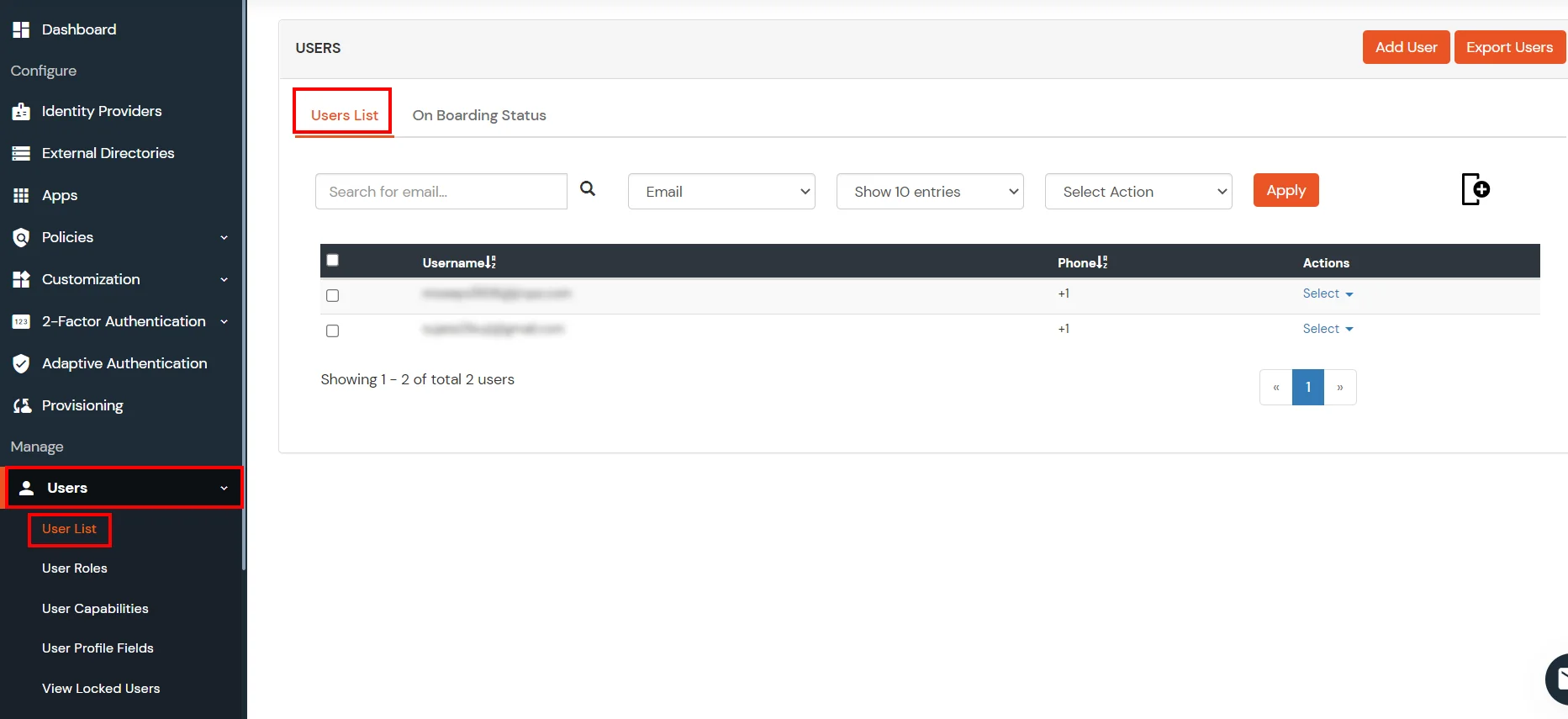
- All the imported users will be auto registered.
- These groups will be helpful in adding multiple 2FA policies on the applications.
miniOrange integrates with various external user sources such as directories, identity providers, and etc.
6. Adaptive Authentication with Citrix NetScaler Gateway
A. Restricting access to Citrix NetScaler Gateway with IP Blocking
B. Adaptive Authentication with Limiting number of devices.
Using Adaptive Authentication you can also restrict the number of devices the end user can access the Services on. You can allow end users to access services on a fixed no. of devices. The end users will be able to access services provided by us on this fixed no. of devices.
You can configure Adaptive Authentication with Device Restriction in following way
- Login to Self Service Console >> Adaptive Authentication.
- Add a Policy Name for your Adaptive Authentication Policy.
- Select your Action for behavior Change and Challenge Type for user from the Action for behavior Change Section.
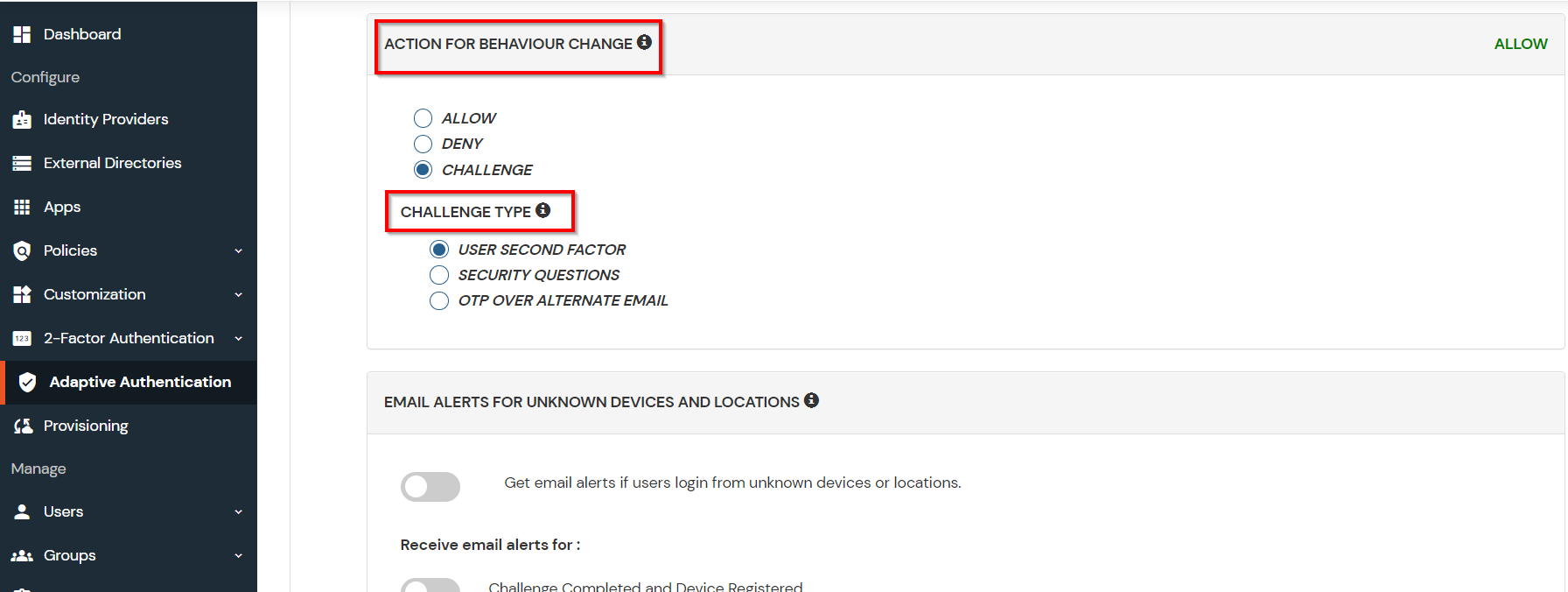
- Scroll down to Device Configuration section and enable Allow User to Register Device option to allow users to register their devices.
- Enter the Number of Devices which are allowed to register in field next to Number of Device Registrations Allowed
- Choose Action if number of devices exceeded (This will override your setting for Action for behavior Change.)
- Challenge: The user needs to verify himself using any of the three methods mentioned in table in step 6.1
- Deny : Deny users access to the system
- Enable option Send email alerts to Users if number of Device registrations exceeded allowed count if you want to alert the user about no of devices exceeding the limit. Save the configuration.
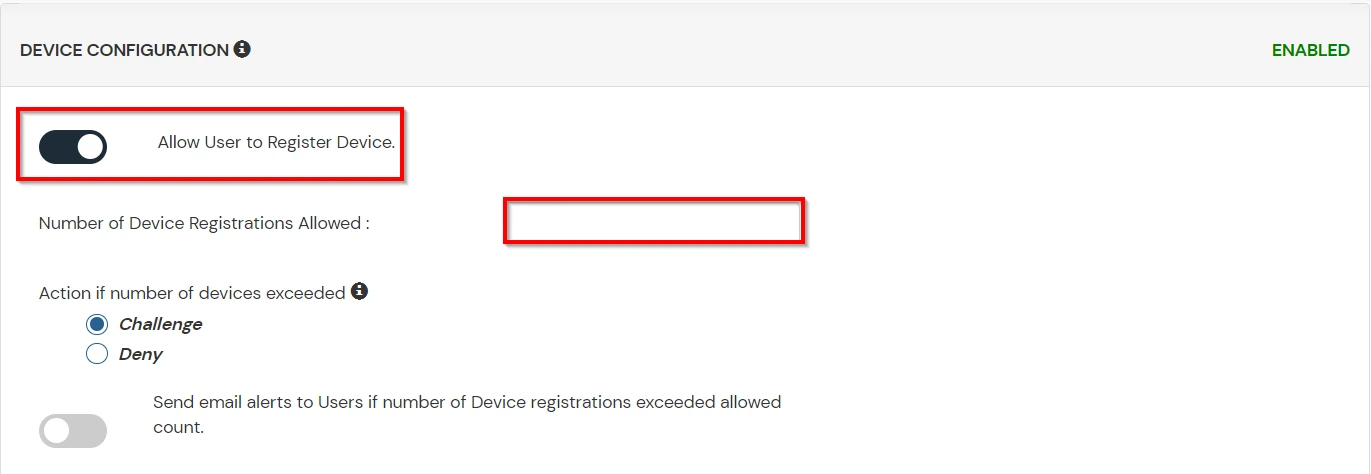
C. Add Adaptive Authentication policy to Citrix NetScaler Gateway.
- Login to Self Service Console >> Policies.
- Click on Edit option for predefined app policy.
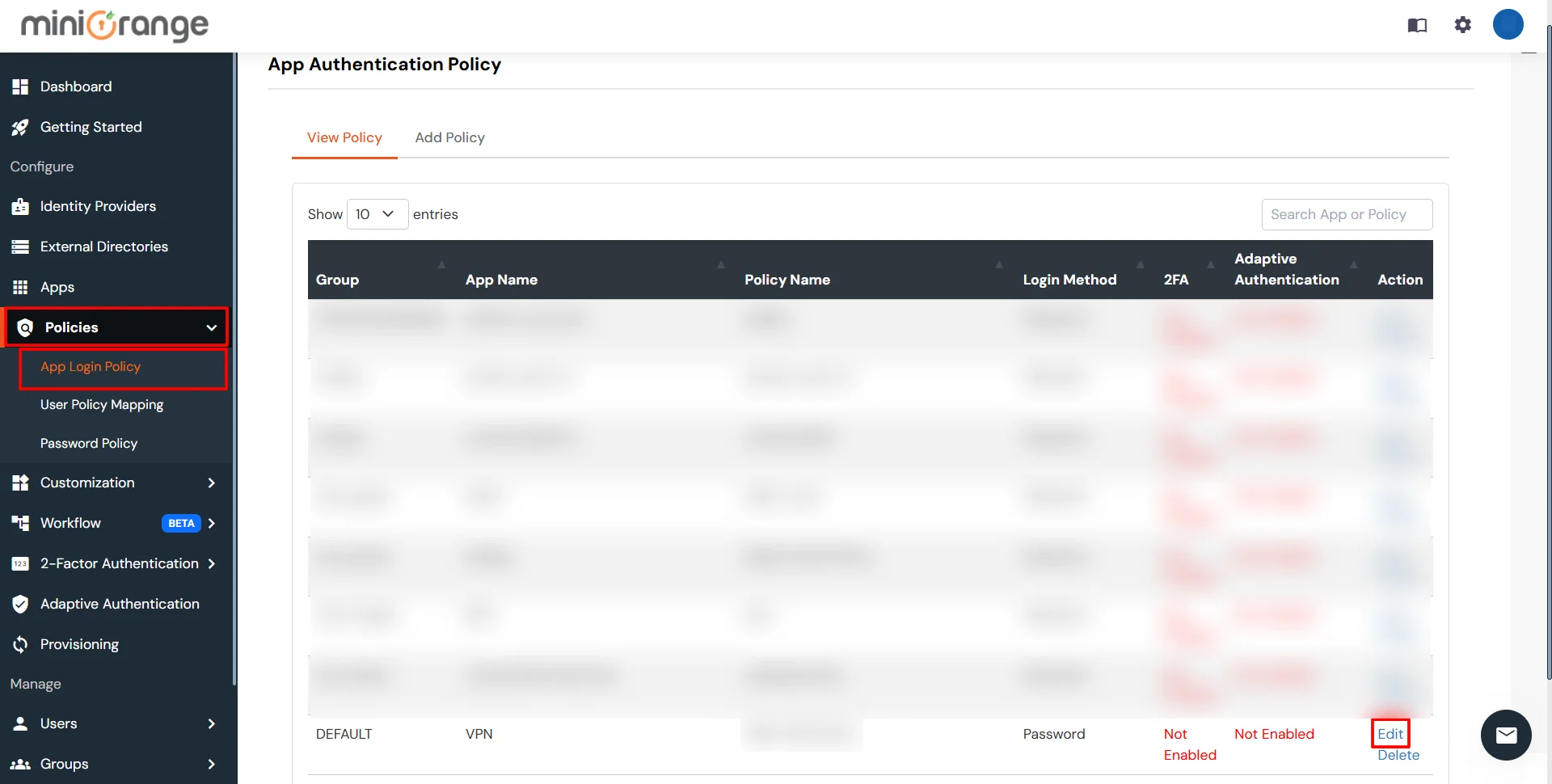
- Set your application name in the Application and select password as Login Method.
- Enable Adaptive Authentication on Policy page and select the required restriction method as an option.
- From Select Login Policy dropdown select the policy we created in last step and click on save.
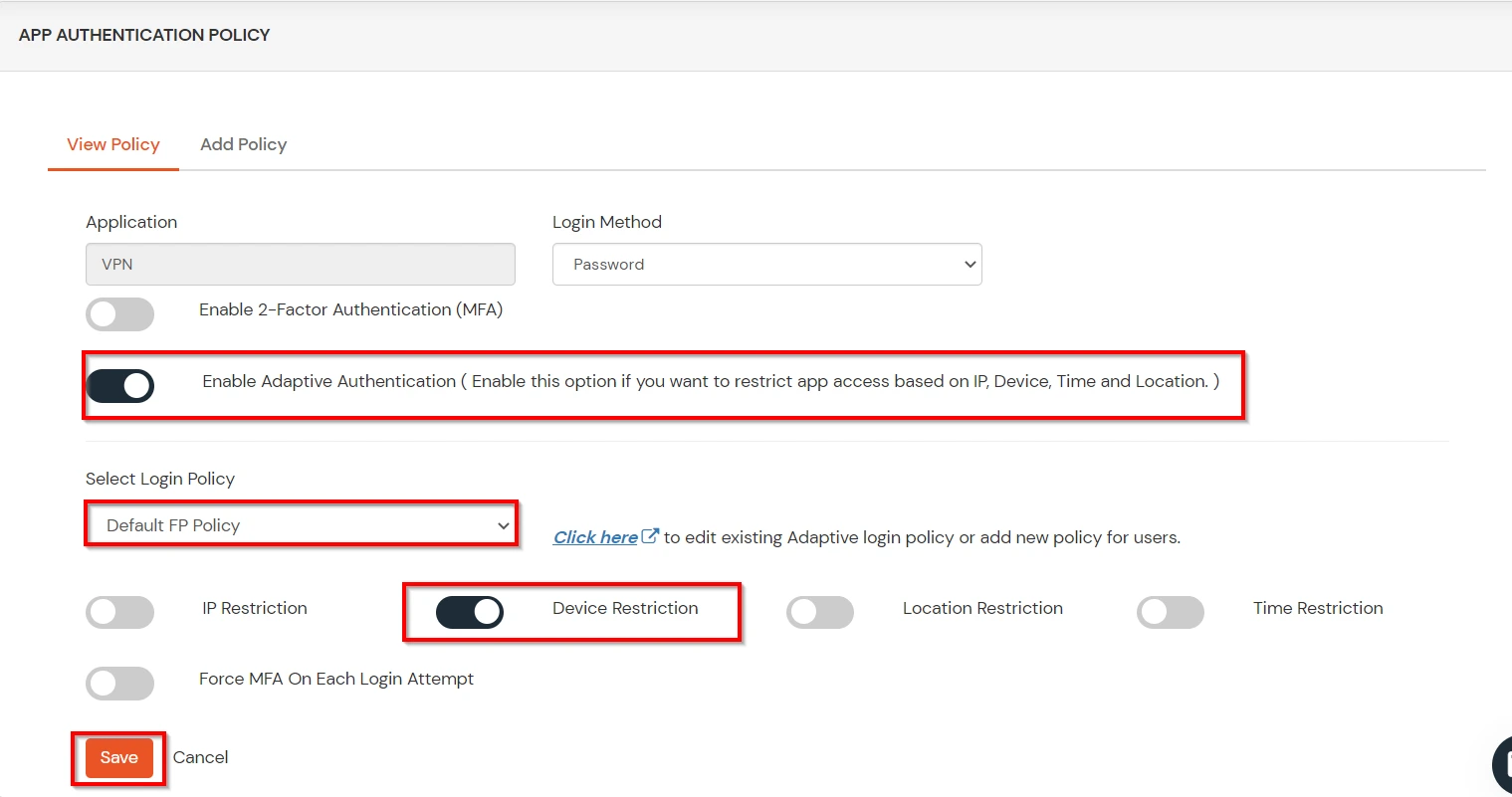
D.Notification and Alert Message.
How to add a trusted Device
- When End-user log in to the self service console after the policy for device restriction is on, he is provided the option to add the current device as a trusted device.
External References


































